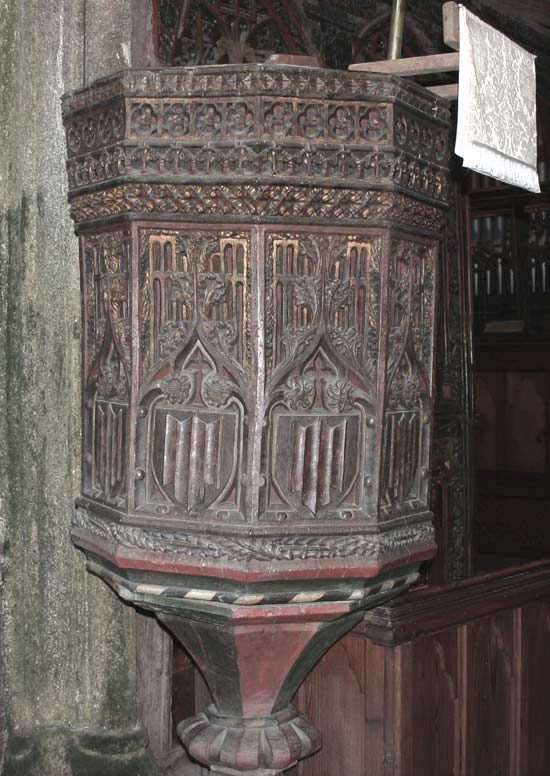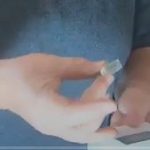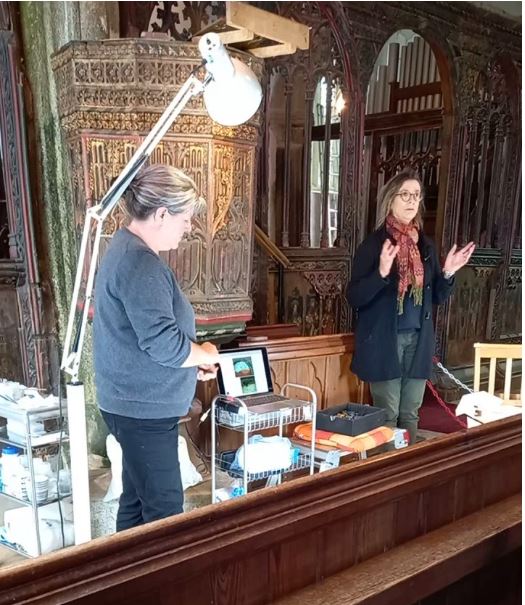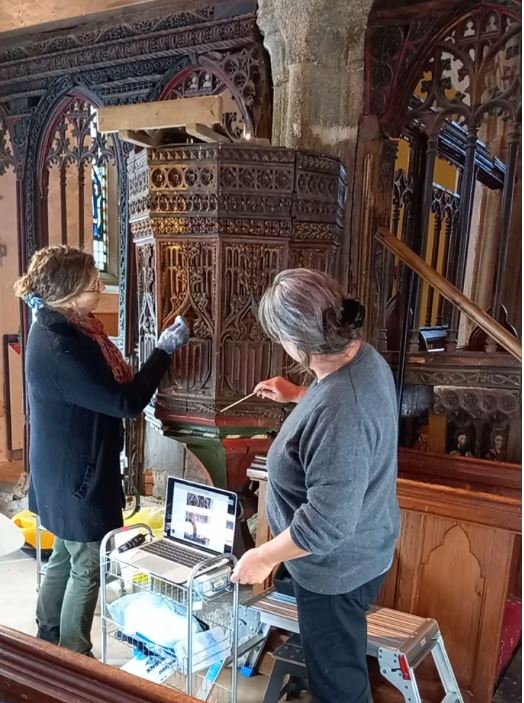Cleaning the Pulpit
Monday 4 October 2021
Please also see the amazing documents that Lynne Humphries has sent us, showing their techniques of cleaning the pulpit: During conservation and Varnish removal.
 |
 |
| Before restoring the Pulpit | After restoring the Pulpit |
We held five sessions on ‘cleaning the pulpit’ on Monday 4 October. Lynne Humphries and Emma Norris gave us a fascinating insight on the complexity of restoring the medieval pulpit. We have one full length video of one of the sessions. Click here to watch it. Lynne and Emma came here three years ago to do a conditioning survey and part of their work involved taking minute samples through the paintwork to the timbers beneath. They were also interested to see if there were any links between the pulpit and the rood screen.
They take a tiny sample of the paint cutting right down to the wood, no more than a millimetre across and they embed it in a resin. They then grind the resin down until they can see the edge and then use a high magnifier glass to see how many layers from the wood to the top layer of varnish. 
Emma explained that they use a magnification glass linked to the computer, which showed all the different colours in great detail, including silver and gold leaf. They also found that there was a lot of blue They found that there had been very little touching up, but there are two layers of varnish, the top one is about 100 years old from their analysis, the other much older, both are discoloured. They had to apply different approaches to different areas of the pulpit because some of the colours are much more sensitive – the red in particular.
 Emma described in detail their techniques for cleaning off the old varnish to reveal the original colours. They take a piece of Japanese Spider’s tissue soaked in a solvent and put this on the area they are working on and clean it off at once. They then roll a cotton bud up the wood – not to agitate the surface or disturb the paint beneath – and keep on doing until they reach the paint level. They use different solvents depending on the colour.
Emma described in detail their techniques for cleaning off the old varnish to reveal the original colours. They take a piece of Japanese Spider’s tissue soaked in a solvent and put this on the area they are working on and clean it off at once. They then roll a cotton bud up the wood – not to agitate the surface or disturb the paint beneath – and keep on doing until they reach the paint level. They use different solvents depending on the colour.
 |
 |